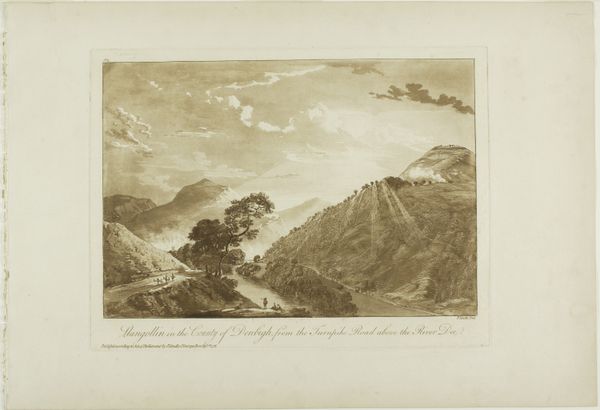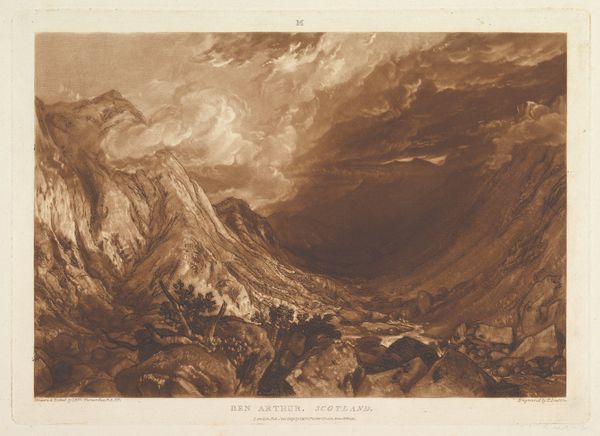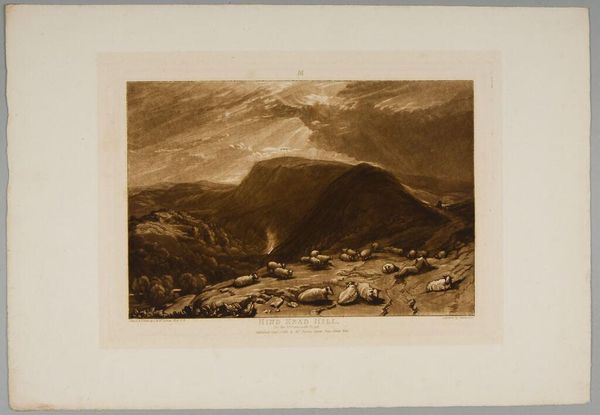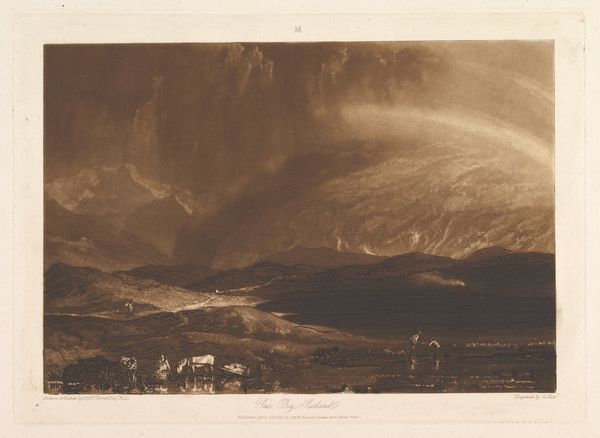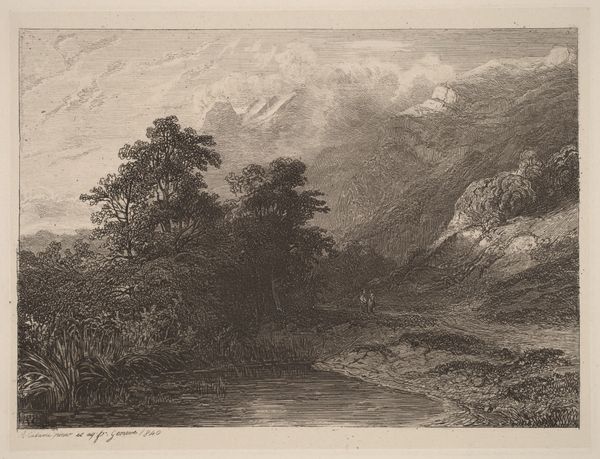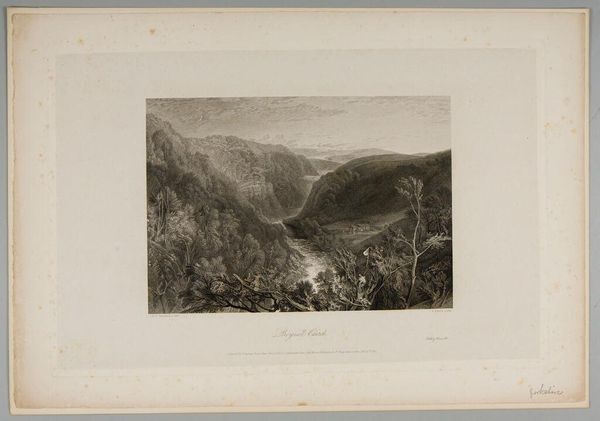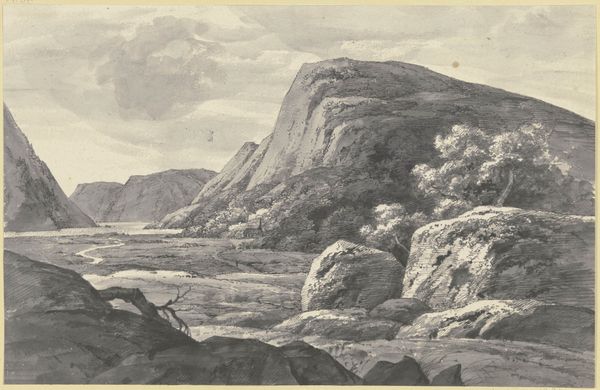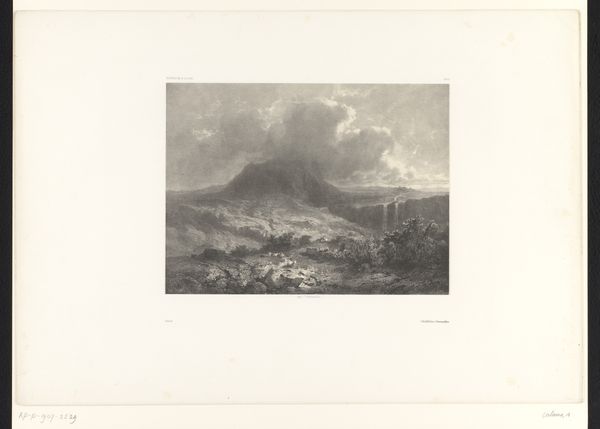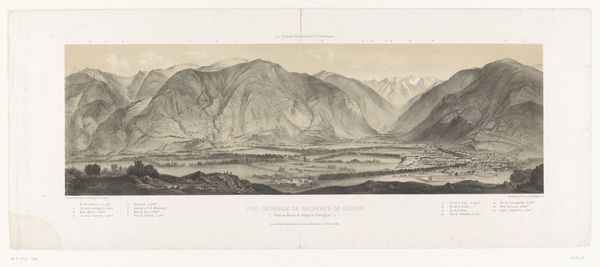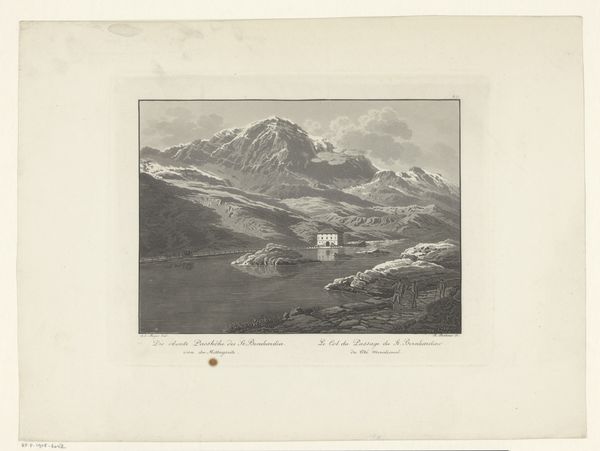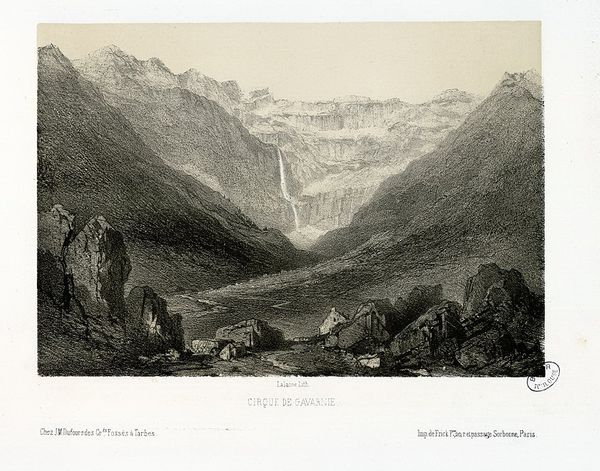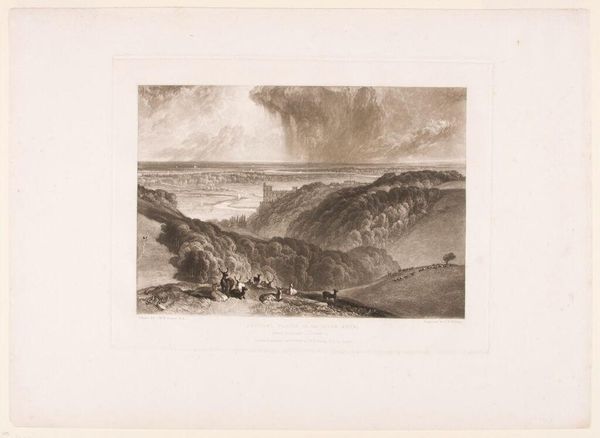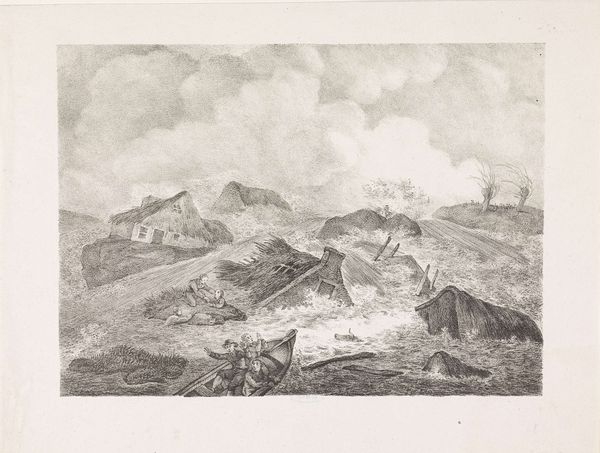
Hind Head Hill, on the Portsmouth Road (Liber Studiorum, part V, plate 25) 1811
0:00
0:00
aquatint, drawing, print, etching
#
aquatint
#
drawing
# print
#
etching
#
landscape
#
romanticism
Dimensions: plate: 7 x 10 5/16 in. (17.8 x 26.2 cm) sheet: 8 1/4 x 11 1/2 in. (21 x 29.2 cm)
Copyright: Public Domain
This is “Hind Head Hill, on the Portsmouth Road,” a print made in 1811 by J.M.W. Turner, a British artist celebrated for his landscape paintings. However, this isn’t a painting. It’s an etching, meaning that Turner used acid to bite lines into a metal plate, which was then inked and pressed onto paper. He also employed a technique called mezzotint, which involves roughening the plate evenly, then selectively burnishing it smooth to create areas of light. Look closely and you can see the velvety texture this creates. The combination of these processes allowed Turner to achieve a remarkable range of tones, from the dark, brooding sky to the soft, rolling hills. The landscape and grazing sheep evoke a romantic vision of rural England, but the printmaking process itself speaks to a different kind of industry. These prints were made in multiples, intended for wide distribution, and consumed by a public eager for picturesque views. By understanding the materials and processes behind this image, we can appreciate how Turner blurred the boundaries between fine art and commercial production.
Comments
No comments
Be the first to comment and join the conversation on the ultimate creative platform.
